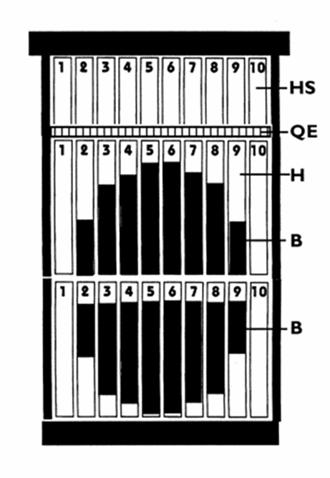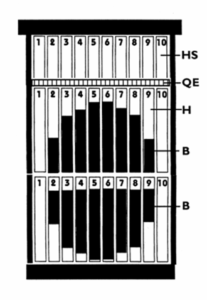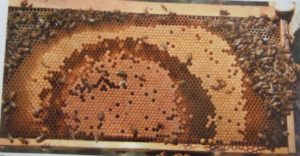Bees are really amazing creatures. IF they survive winter, a big IF these days, their spring colony expansion is one of the incredible features of a bee colony. Given pollen, good enough weather to forage and a healthy population, the colony will expand from a cluster the size of a softball to a brood area of exercise ball proportions. It is an amazing growth to witness.
Before bees hunker down in the fall, they rear the bees that will rear the “fat” fall bees that suspend the aging process to enable them to live 6 months rather than 6 weeks. But there is winter attrition of numbers. By the spring season, 30,000 worker-strong fall colonies can be down to 10,000 (3 lbs) of adults. These adults need cover the expanding spring brood area. Bees measure day length and they know spring is coming even when the weather is rainy and cool. New pollen kicks off and sustains the growth but the bees will quickly use up their fall bee bread stores. Honey, stored from last season, supplies the energy for the busy workers.
Honey bees do not heat their entire hive, like we tend to do in our homes. They heat the spot where they are rearing brood. So their early spring shape is a softball – extending over 3-5 frames, often in the top box. Their amazing development will result in the that softball growing through intermediate sizes in 2-3 generations and before the blackberry flow, fully expanded colonies will have expanded to cover 12-16 frames in the brood area, covering an area the size of be exercise ball, perhaps an oval rather than perfectly round. Don’t neglect to add a super to spring colonies so incoming nectar doesn’t interfere with brood area expansion. Diagram of fully expanded spring colony
Often bee colonies in the spring are living ‘on the edge’. They don’t have sufficient bee bread (and sometimes enough honey reserves) needed to drive colony growth. In fact, some areas have a spring dearth period after bees begin to expand and colonies perilously close to the edge may perish or suffer heavy brood loss when a string of cold, wet days keep them largely confined to their hive. Although there may be plentiful bloom, it is of no use if the foragers aren’t able to get out and collect.
We can read this rapid expansion in spring brood frames. The queen lays eggs in the center of the frame and when she returns she lays further outside the central core to expand the brood sphere size. This is clearly shown on frame here. Darker (older) capped brood) in first semi-circle and then she returned to lay more eggs to widen the semi-circle, the lighter (younger-aged) capped brood. The brood rearing sphere and cluster of adult bees expands from volleyball to basketball or beach ball size.
Newly emerged adults take up hive work, freeing ever more foragers to seek more plentiful nectar and pollen with the improving spring weather. IF they stay together (i.e. don’t swarm, a BIG IF), the colony is in line to store surplus honey. Proper bee stewardship means staying ahead of the bees, keeping ahead of supering and allowing brood sphere expansion so the bees don’t congest and start queen cells.
Spring Brood Expansion Frame



